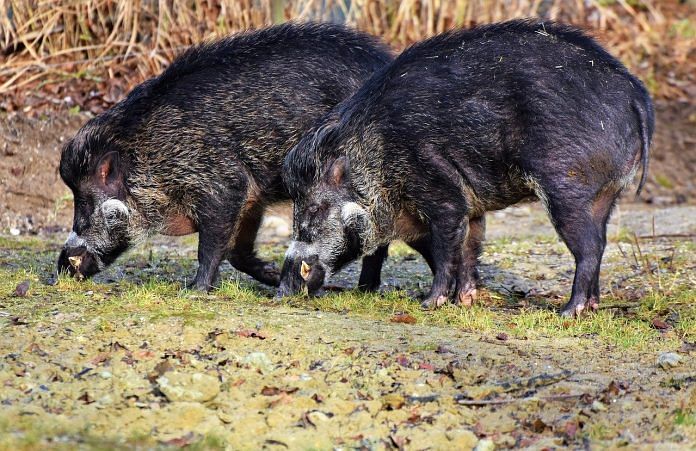New Delhi: Wild boars get a bad rap the world over. They’re seen as pests in Scotland, US and other parts of Europe where they wreck havoc on crops and cattle. In India, too, there are calls to declare them as ‘vermin’, with Kerala being the latest state to do so.
The Kerala government, in a 14 February assembly resolution, called on the Centre to declare wild boar ‘vermin’, among the other amendments it sought to the Wildlife (Protection) Act, 1972, to reduce human-animal conflict.
Such an amendment would take away all protection that the Act accords to the animal and allow its culling. The Kerala assembly passed the resolution, saying wild boars damage crops and even attack humans and livestock in rare cases.
Kerala, in 2021, had made a similar push. The Centre, at the time, declined the request, saying, “it would do more harm than good”. However, states, like Uttarakhand and Bihar, earlier, have received the Centre’s nod to temporarily declare wild boar as ‘vermin’.
Wild boars — scientific name Sus scrofa and sometimes called wild pigs — are found across the world, including in India. The International Union for Conservation of Nature (IUCN) categorises them as ‘of least concern’ due to their abundance.
Also read: Kerala Assembly passes resolution urging Centre to amend wildlife laws as animal attacks rise
Why there’s a human-wild boar conflict
The 2023 guidelines by the ministry of environment, forests, and climate change (MoEFCC) on mitigating human-wild boar conflict says the animals are “multi-speciality ecosystem engineers”. They help disperse seeds through their ploughing, form the prey base for large carnivores such as tigers, and are important scavengers due to their omnivorous diets.
Wild boars, however, are infamous for damaging crops when they enter human habitats. A 2022 study on wild boars and agricultural land in Tamil Nadu found these animals are unique in that they damage crops at every stage — from seedlings to fully mature crops. People have also died in wild boar attacks or road accidents.
“Wild boars, in ecology terms, are r-selected species. They reproduce fast and have several offspring at a time. The same leads to overpopulation that could become cumbersome when it spills into human habitats,” Ramesh Chinnasamy, a scientist with the Wildlife Institute of India, told The Print.
The MoEFCC blamed deforestation and a decline in populations of large predators like tigers for an increase in the population of wild boars.
The animals are mainly drawn to human habitats on the fringes of forests or other protected areas, including Kerala’s Wayanad or Idukki districts. They’re also drawn to crops and human food waste in garbage dumps.
There is no one reason why the population of wild boars in human habitats has increased considerably, but experts have ideas.
“Easy access to crops or the removal of predators could be some of the reasons,” said Aritra Kshettry, a scholar at WWF India.
“Overall, we need to understand that animals don’t understand human-made boundaries. They’ll go wherever there is ample food and habitat. It is up to us to devise ways to prevent conflict,” he said.
Also read: Chief Wildlife Wardens can declare wild boars vermin; no need to amend wildlife law: Union minister
Mitigation measures
A.K. Saseendran, the forest minister of Kerala, said the state has allowed limited hunting of wild boars by local bodies since last year. The process though is tedious, he said.
“A committee of local panchayat leaders and the divisional forest officer needs to ask for permission from the chief conservator of forest in their circle. Then, the chief conservator needs to get permission from the chief wildlife warden. Will an animal wait for the committee’s permission?” he asked.
If the Union government approved the status of wild boar as ‘vermin’, it would make it easier to cull them without having to wait for permission.
“Animals can be declared ‘vermin’ in a specific region and also for a specific period like a year or so. It is not a permanent classification,” said Chinnasamy.
The human-wild boar conflict isn’t unique to Kerala. In 2020, Uttarakhand declared wild boars and nilgai ‘vermin’ due to the crop loss faced by these animals. The Bihar government did the same in 2015.
After the Kerala government permitted local bodies to hunt wild boars, the Tamil Nadu government, this year, said it would look into “the Kerala model” to deal with its wild boar problem.
While culling is one measure to deal with a growing population, experts, including Kshettry, said it cannot be done indiscriminately.
“The number of animals to be culled should be based on a scientific assessment of their local abundance and conservation priority,” he said.
The MoEFCC guidelines provide a host of measures to reduce human-wild boar conflicts, including an accurate assessment of the wild boar population hotspots, the management of garbage disposal, and the translocation of wild boars when they’re in abundance in one area.
Other suggestions that states like Kerala are currently implementing are chain links, solar fences, trenches, and other crop deterrents.
One of the main reasons for discouraging indiscriminate or unscientific culling of boars is their role in their ecosystems. As wild boars form a prey base for large carnivores, a significant reduction in their population would also affect the predators.
“In forest fringe areas, when there’s a lack of wild prey, it could lead to an increased loss of livestock,” said Kshettry. “Any solution would require government agencies working together instead of in silos.”
(Edited by Madhurita Goswami)
Also read: TN studying Kerala model to tackle wild boar menace: Minister



